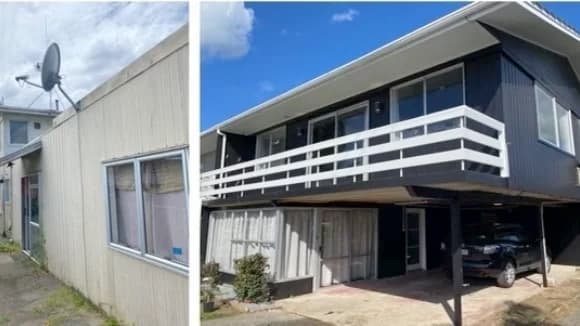
BRRRR
The ultimate guide to the BRRRR strategy
The BRRRR strategy is game plan for how to quite literally, build equity and value into a property through renovation improvement.
BRRRR
6 min read

Author: Ilse Wolfe
Former Renovations Coach at Opes Accelerate. Property Investor for 15 years.
Reviewed by: Laine Moger
Journalist and Property Educator, holds a Bachelor of Communication (Honours) from Massey University.
A grotty-looking kitchen isn’t going to pop out to a potential tenant scrolling through Trade Me.
As the social hub of the home, tenants immediately place a high value on the kitchen – long before they start arguing over who gets what bedroom or where the couches will fit in the lounge.
This is why it’s worthwhile for renovations-based investors to make sure they have a rock-solid kitchen set up.
This will increase the value of the property, earn you more rent, and make it more likely you will keep a tenant.
But, before anyone gets started, the biggest point to remember here is: This is a renter’s kitchen, not the kitchen of your dreams. This means that anything you spend still needs to earn a return.
What you do to your kitchen will also depend on who your future tenant will be, and how long the materials will last.
In this article you’ll learn the top 5 considerations you need to think about to nail the ultimate renter’s kitchen for your investment property.
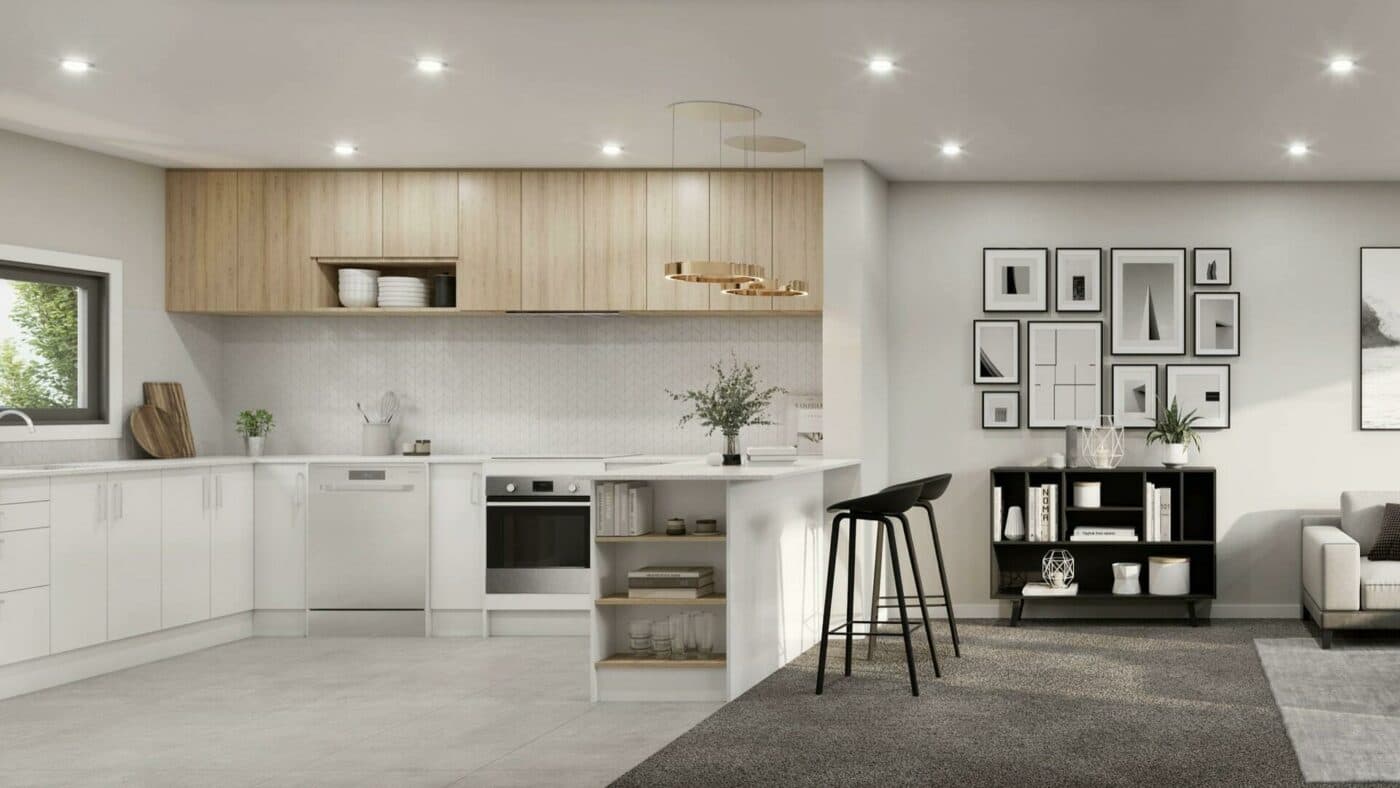
If you can salvage the existing elements of the kitchen you will save significant amounts of money. If you can increase the value while saving money your yield will skyrocket.
For instance, it’s better (if you can) to repaint kitchen cupboards rather than replace them. It’s not just better for the environment, it’s also better for your bottom line.
If you do need to replace, make sure your spend actually increases the value of your investment. Follow this simple rule: if it’s not going to make a difference to the value of the property, don’t do it.
For investors constrained by a budget, focus your efforts on revitalising existing cabinetry. Once that’s done, replacing benchtops with lower-cost Formica and stainless steel tends to fit the bill. This offers a low-cost but high-impact solution.
Similarly, rather than replacing tiles, you can repair them. Here, you use a specialist tile paint such as the Dulux Renovation Range – Tiles and Benchtops. This will completely rejuvenate the kitchen and will probably only cost about $100 to $200 if doing the work yourself.
There are two ways to revitalise a used kitchen: DIY or hire a professional, although you can do a mix of both. Hiring third-party labour will generally cost $60 to $110 per hour.
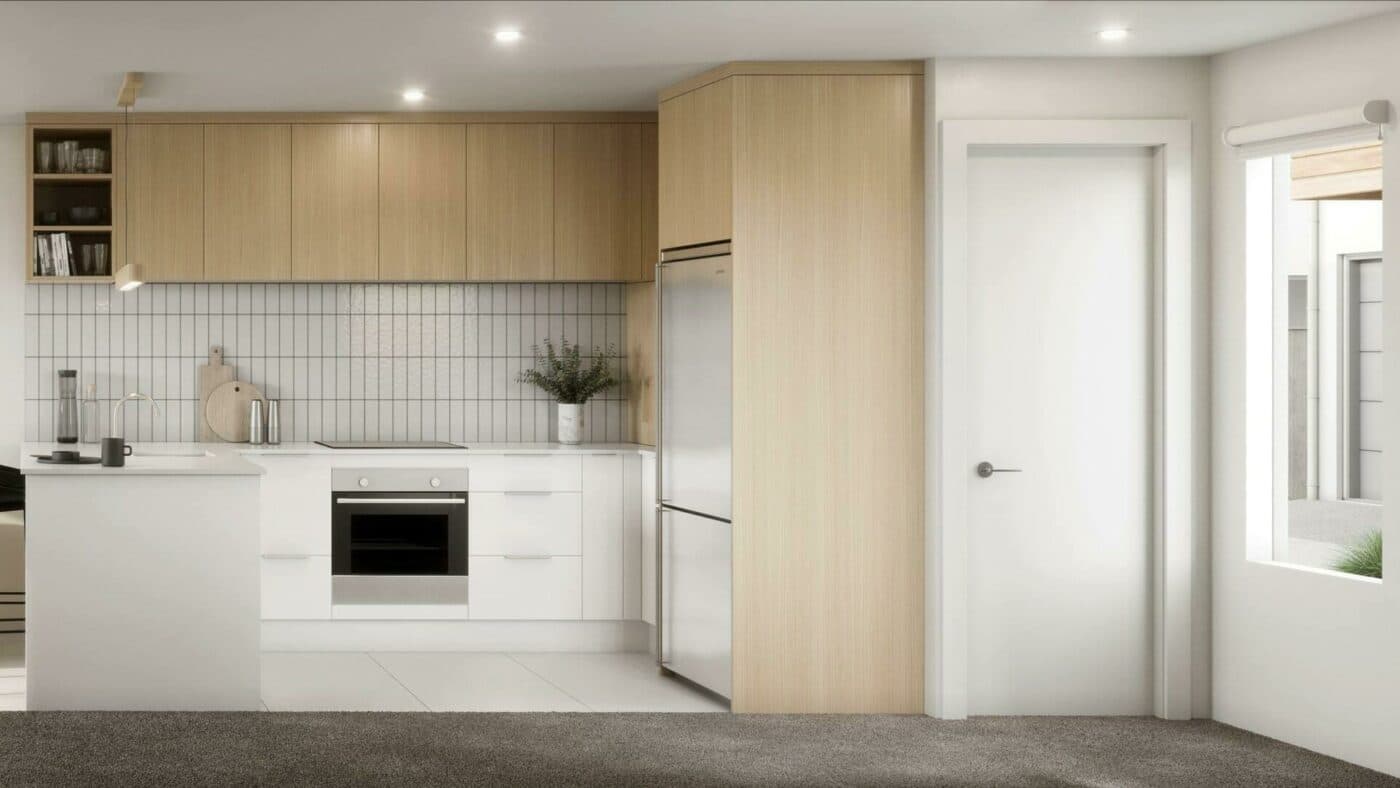
While it can be very tempting to custom design the perfect kitchen, again it’s important to remember this is a rental. It’s going to have to survive a multitude of tenant activity.
So, sometimes the kitchen you want isn’t suitable for your investment property.
With this in mind it’s a good idea to choose default or standardised cabinetry colours, materials and finishes that are readily available so can be replaced when needed.
It’s also good practice to avoid any custom cabinet sizes that add unnecessary cost or time to the production.
For example, “custom-made” joinery can add an additional 4 to 6 weeks when you factor in manufacture time. This extends the time it takes to renovate your property, which means you take longer to get a tenant in, so less rent to pay the mortgage.
At first glance a flat-packed kitchen can appear the best value, but this isn’t always the case, especially if the installation goes wrong or takes longer than expected.
For instance, one investor I worked with, here at Opes Accelerate, saved $1,000 in the cost of kitchen materials by using a flat-pack. However, the installation took 1.5 days longer to install, as the builder was unfamiliar with the product.
At $60 an hour, for an additional 12 hours of labour, this can come at an additional $720 cost to the landlord.
This is why investors may find the most efficient new kitchen solution is to order direct from the manufacturer, at wholesale price, and select from their standard colour palette.
This way you can secure a fully-equipped kitchen in the range of $5000 to $8000, including delivery and install, from final design to install in 2 to 2.5 weeks.
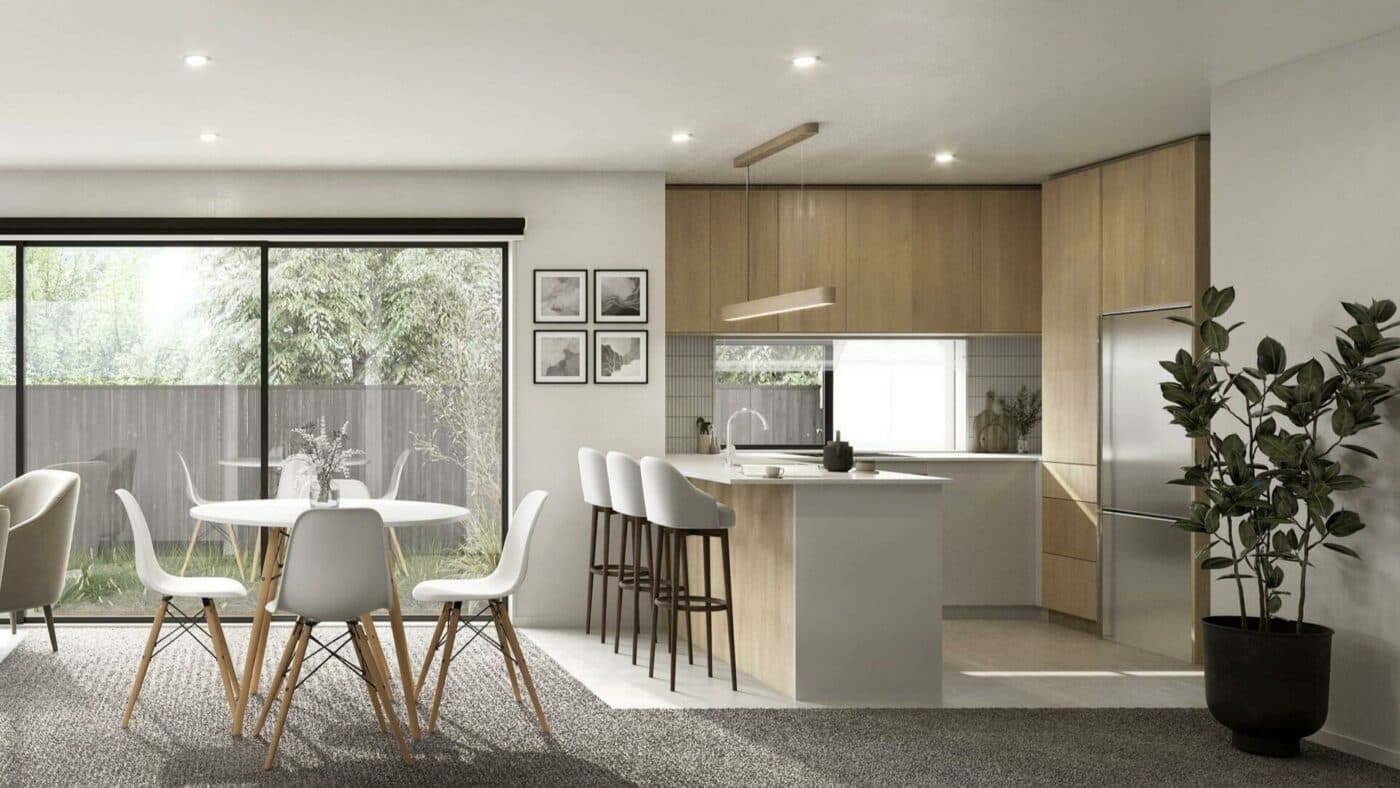
Kitchens are high-use rooms. Because you can’t foresee what your future tenants’ knife-wielding skills will be, you’re going to need to ensure your surfaces are prepared in advance.
There are a few materials to look out for when it comes to ensuring the longevity of your kitchen.
When you’re building your own perfect kitchen you might decide to go for high-end marble and the most beautiful benchtop you can find. That may not be the right fit for a renter’s kitchen.
You may have several households move through your property over the next decade. Not every tenant will take as much care of your beautiful benchtop as you would.
So it is often a better idea to choose something hard-wearing that will withstand use, no matter who the tenant is.
If you decide to sell the property you can always replace the benchtop just before sale for something someone buying the home for themselves would fall in love with.
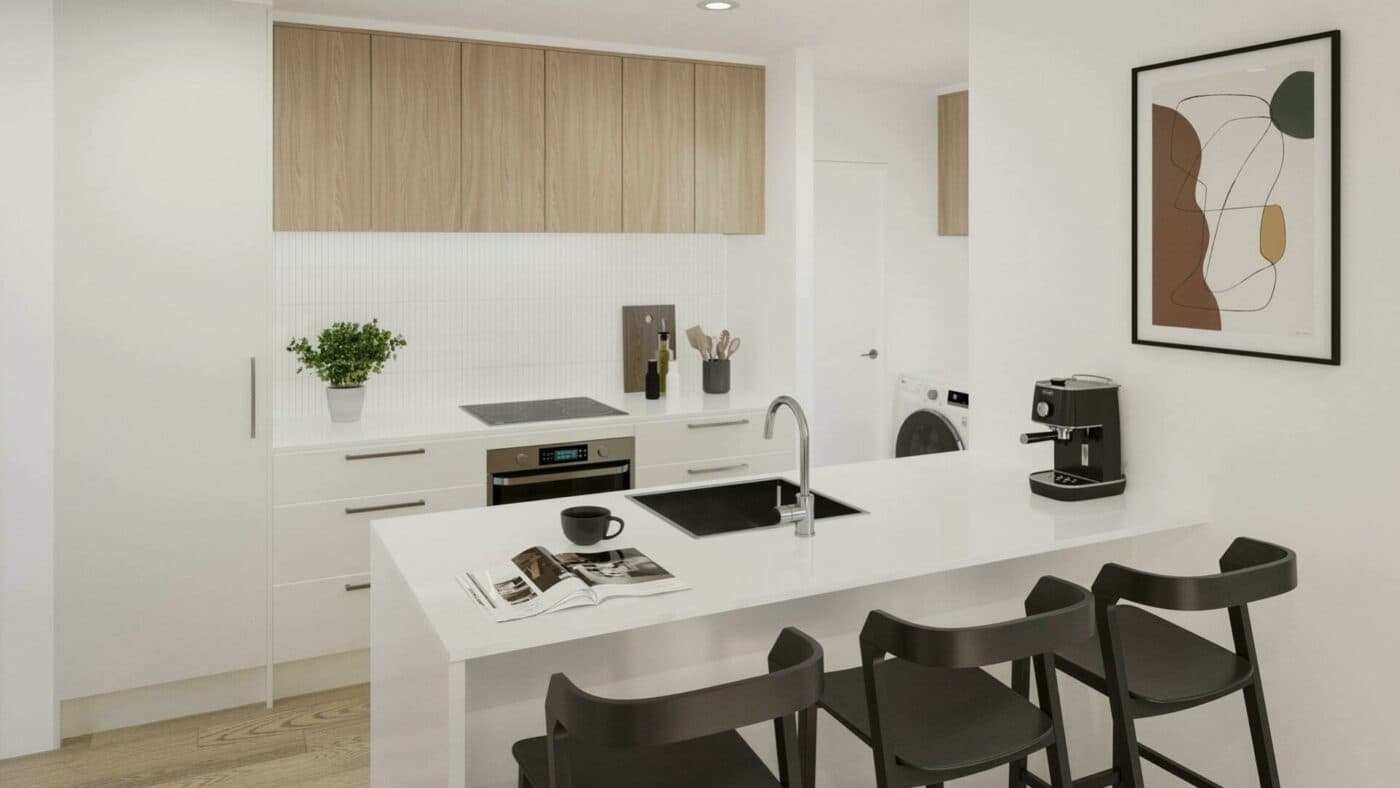
It’s a similar price versus longevity juggle for cabinetry.
For instance, its good practice to pre-empt what sort of tenant will most likely be using this kitchen.
For example, opting for recessed handles rather than ‘D’ handles (that stick out from the draw) might reduce the opportunity for young kids to swing on and break handles, which add to your maintenance bill.
But if your property is likely to appeal to a group of working professionals, where multiple people are expected to live together in a room-by-room rental, offer plenty of storage space for food and dining.
Also, don’t worry too much about including an internal waste bin. A rubbish bin works just as well and you don’t have to worry about the upkeep.
By their nature kitchens have to withstand a lot of water abuse and this can cause premature aging.
This is why it’s really important to be diligent with pre and post-tenancy inspection photos to manage any damage that requires replacement due to negligence.
You’re looking for swelling in finishings and cracks in the seals.
At the end of the day it’s up to the investor to consider each of these 5 considerations in turn, to find the right balance between materials versus cost, and materials versus tenant.
And this is something that will be unique to each investment.
For example, if your rental is near a train station or the city and you’re expecting a flatting-type situation for young professionals, make sure you have the space for them. Similarly, you can go some way to mitigating maintenance costs by child-proofing your family-sized home.
Don’t be afraid to scour the price list when designing a new kitchen, and it’s totally OK to opt for function and the lower-cost selection to keep the overall design cost down.
Always remember the bottom line: This is a renter’s kitchen - not yours.
Be wary of falling into the trap of projecting your own wishes into this kitchen. Think about who your future tenant is going to be, and then kit it out accordingly.
This article is for your general information. It’s not financial advice. See here for details about our Financial Advice Provider Disclosure. So Opes isn’t telling you what to do with your own money.
We’ve made every effort to make sure the information is accurate. But we occasionally get the odd fact wrong. Make sure you do your own research or talk to a financial adviser before making any investment decisions.
You might like to use us or another financial adviser